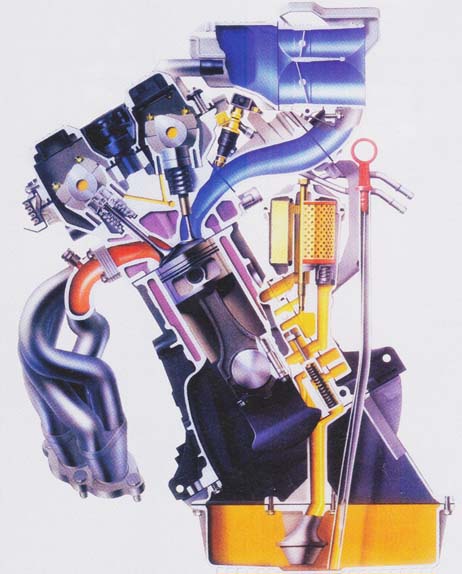 The technology of producing oils was (and is) constantly modified. This is due to a very important role, what oil plays in the engine. The drive unit consists of a very large number of elements that move towards each other. This movement is accompanied by friction – mating surfaces are never perfectly smooth. A way to reduce unfavorable phenomena accompanying friction (rise of temperature, accelerated wear, risk of seizure, that is, the local exceeding of the flow temperature of the metal) is the introduction between the moving elements of the substance, that would prevent their mutual contact. This is the basic task of an engine oil, but also a gear one.
The technology of producing oils was (and is) constantly modified. This is due to a very important role, what oil plays in the engine. The drive unit consists of a very large number of elements that move towards each other. This movement is accompanied by friction – mating surfaces are never perfectly smooth. A way to reduce unfavorable phenomena accompanying friction (rise of temperature, accelerated wear, risk of seizure, that is, the local exceeding of the flow temperature of the metal) is the introduction between the moving elements of the substance, that would prevent their mutual contact. This is the basic task of an engine oil, but also a gear one.
There are several places in the engine that require special protection: main bearings, crankshaft and camshaft, as well as cylinder bearing pairs / piston rings, smooth the cylinder-piston skirt, the cam and valve tappet or the tappet and its guide, and the valve stem and its guide. Essentially an oil film in all plain bearings (an oil layer that prevents mechanical contact between metal surfaces) it is kept by the auxiliary supply of pressurized oil, while in such places, like for example. piston-cylinder assembly or between the timing cam and the follower, this film must survive due to the good properties of the oil itself.
Oil – in addition to reducing friction losses and wear of mating components – it also performs other important tasks. It must dissipate heat well from hot engine components. Seals the ko-
combustion area by filling the space between the piston and the cylinder. It protects the components of the drive unit against corrosion and neutralizes acid combustion products. It prevents the formation of deposits, transporting them to the filter. After all, it stores pollution, filings etc.. (in the period between replacements). To some extent, it also participates in the suppression of noise and vibrations. It follows, that the oil should have a number of specific properties, often contradicting each other:
• above all, maintain the appropriate viscosity in a wide temperature range; best, if it was constant at operating temperature, which ensures proper lubricating properties, and as low as possible during start-up, which would allow the oil to quickly reach all points requiring lubrication (this total property of oil is determined by the so-called. viscosity coefficient)
• provide the lowest possible coefficient of fluid friction, which would improve the mechanical efficiency of the engine
• maintain a sufficiently high auto-ignition temperature
– after all, it comes into contact with highly heated elements
• keep freezing point low, especially in countries with harsh climates
• have a low content of sulfur and nitrogen
• have low volatility
• offer good miscibility with additives, and at the same time a low tendency to react with sealing materials in the engine.
And all these features should not change over a long period of time.